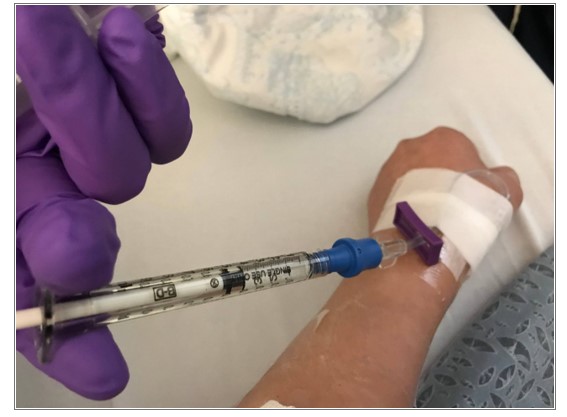Which action should a nurse plan for a client who has episodes of acute anxiety?
Isolate the client when there are observable physiologic symptoms of anxiety.
Ignore the client’s behavior as obvious attempts to gain attention.
Reduce all stress whenever the client seems anxious.
Assist the client to identify triggers for the episodes.
The Correct Answer is D
This is because helping the client to recognize and avoid situations that cause anxiety can reduce the frequency and severity of acute anxiety episodes. According to , a nurse should encourage the client to verbalize feelings and provide a calm and supportive environment.
Choice A is wrong because isolating the client when there are observable physiologic symptoms of anxiety can increase the client’s sense of fear and loneliness.
The nurse should stay with the client and offer reassurance and comfort.
Choice B is wrong because ignoring the client’s behavior as obvious attempts to gain attention can make the client feel rejected and misunderstood.
The nurse should acknowledge the client’s feelings and provide empathy and support.
Choice C is wrong because reducing all stress whenever the client seems anxious can prevent the client from learning coping skills and developing resilience.
The nurse should help the client to identify healthy ways of managing stress and anxiety.
Nursing Test Bank
Naxlex Comprehensive Predictor Exams
Related Questions
Correct Answer is C
Explanation
Irrigating the tube with 30 mL of sterile saline as needed. This prescription should be questioned by the nurse because it may cause trauma to the kidney or dislodge the tube. The nurse should only irrigate the tube if ordered by the health care provider and with a smaller amount of fluid.
Choice A is wrong because monitoring the urine’s color and odor is an appropriate intervention for a client with a nephrostomy tube. The urine may be bloody or cloudy initially, but it should gradually clear.
Choice B is wrong because recording the intake and output every eight hours is also an appropriate intervention for a client with a nephrostomy tube. The nurse should measure and document the amount and characteristics of urine drainage and report any changes or abnormalities.
Choice D is wrong because measuring the vital signs every four hours during the day is a reasonable prescription for a client with a nephrostomy tube. The nurse should monitor the client for signs of infection, bleeding, or obstruction.
Correct Answer is D
Explanation
A weak, rapid pulse indicates that the client is experiencing hypovolemia or low blood volume due to blood loss during surgery.
The nurse should recommend to the provider to administer intravenous fluids to restore the client’s circulating volume and improve their hemodynamic status.
Choice A is wrong because anticholinergics are drugs that block the action of acetylcholine, a neurotransmitter that stimulates the parasympathetic nervous system.
Anticholinergics can cause tachycardia, dry mouth, urinary retention, and blurred vision. They are not indicated for hypovolemia.
Choice B is wrong because urinary catheter placement is not a priority intervention for a client with hypovolemia.
Urinary catheterization can help monitor urine output and renal perfusion but does not address the underlying cause of low blood volume.

Choice C is wrong because beta blockers are drugs that block the action of epinephrine and norepinephrine, neurotransmitters that stimulate the sympathetic nervous system.
Beta-blockers can lower blood pressure, heart rate, and cardiac output.
They are not indicated for hypovolemia and can worsen the client’s condition.
To communicate this information using the SBAR tool, the nurse should follow these steps: Situation: Identify yourself, the client, and the problem.
For example: “I am (name), the nurse caring for (client name) in room (number).
I am calling because I am concerned that the client has developed hypovolemia after surgery.”
Background: Provide relevant and brief information related to the situation.
For example: “The client had a surgical procedure (name and type) at (time) today. They have lost (amount) of blood during and after surgery.
Their current vital signs are: blood pressure (value), pulse (value), respiratory rate (value), temperature (value), oxygen saturation (value).”
Assessment: Share your analysis and considerations of options. For
Whether you are a student looking to ace your exams or a practicing nurse seeking to enhance your expertise , our nursing education contents will empower you with the confidence and competence to make a difference in the lives of patients and become a respected leader in the healthcare field.
Visit Naxlex, invest in your future and unlock endless possibilities with our unparalleled nursing education contents today
Report Wrong Answer on the Current Question
Do you disagree with the answer? If yes, what is your expected answer? Explain.
Kindly be descriptive with the issue you are facing.
